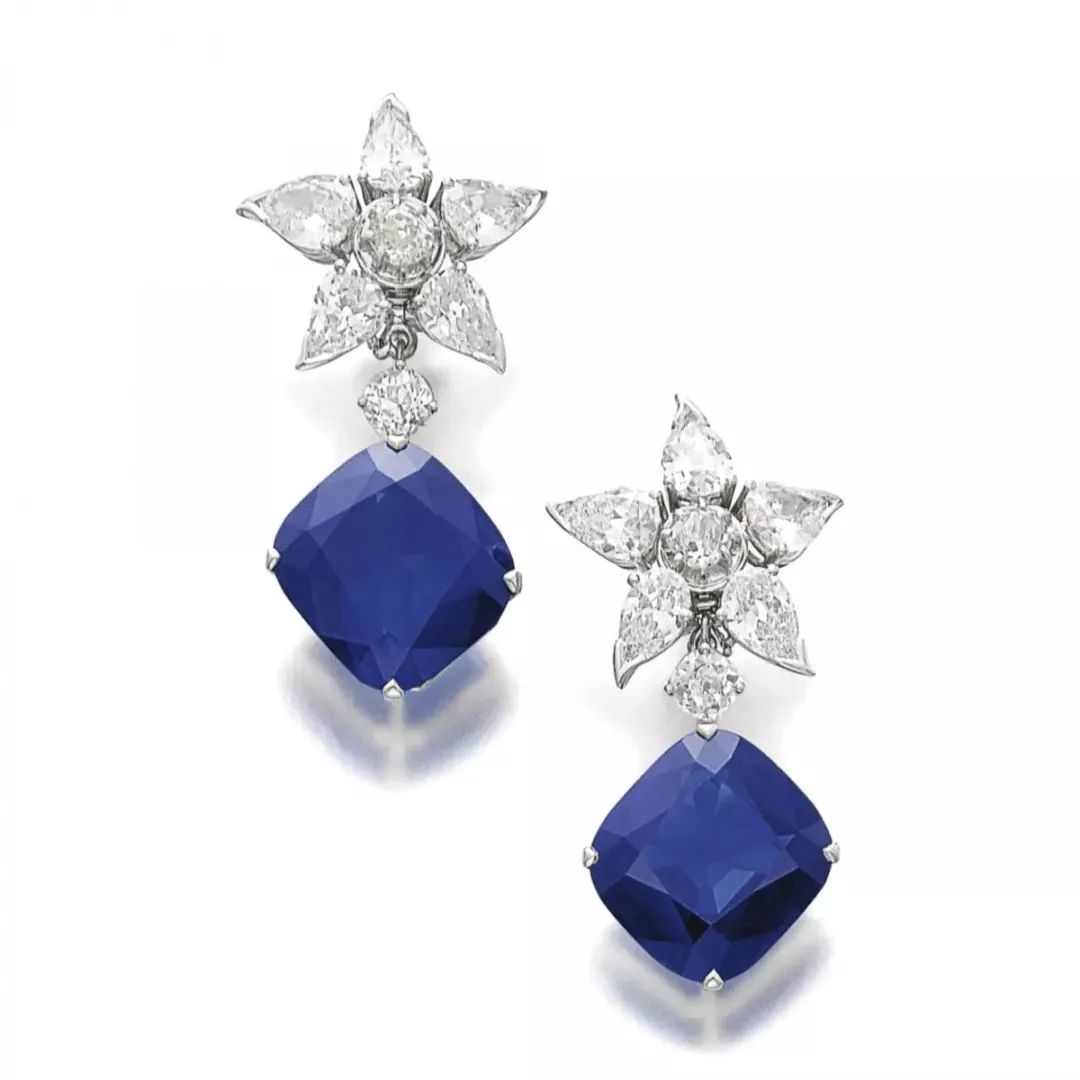
VERTU IRONFLIP: A Perfect Fusion of Intuitive Design and Heroic Colours
VERTU IRONFLIP, a folding screen mobile phone for high-end men, not only has the top technological configuration, but also the
At a previous Sotheby’s autumn jewelry auction, a Cartier sapphire bracelet set a record for the highest transaction at the auction.
It was sold for $6.13 million, which is more than twice its estimated value, or over 40 million yuan, making it one of the highest-priced bracelets in auction history.

This bracelet was born in 1927, and the overall design presents a typical Art Deco decorative art style.
The main stone of the bracelet is a 47.07-carat Burmese sapphire, with extremely high transparency, top-tier color and quality, and is highly sought after.
So today, let’s understand together what a sapphire is and why it is so popular?
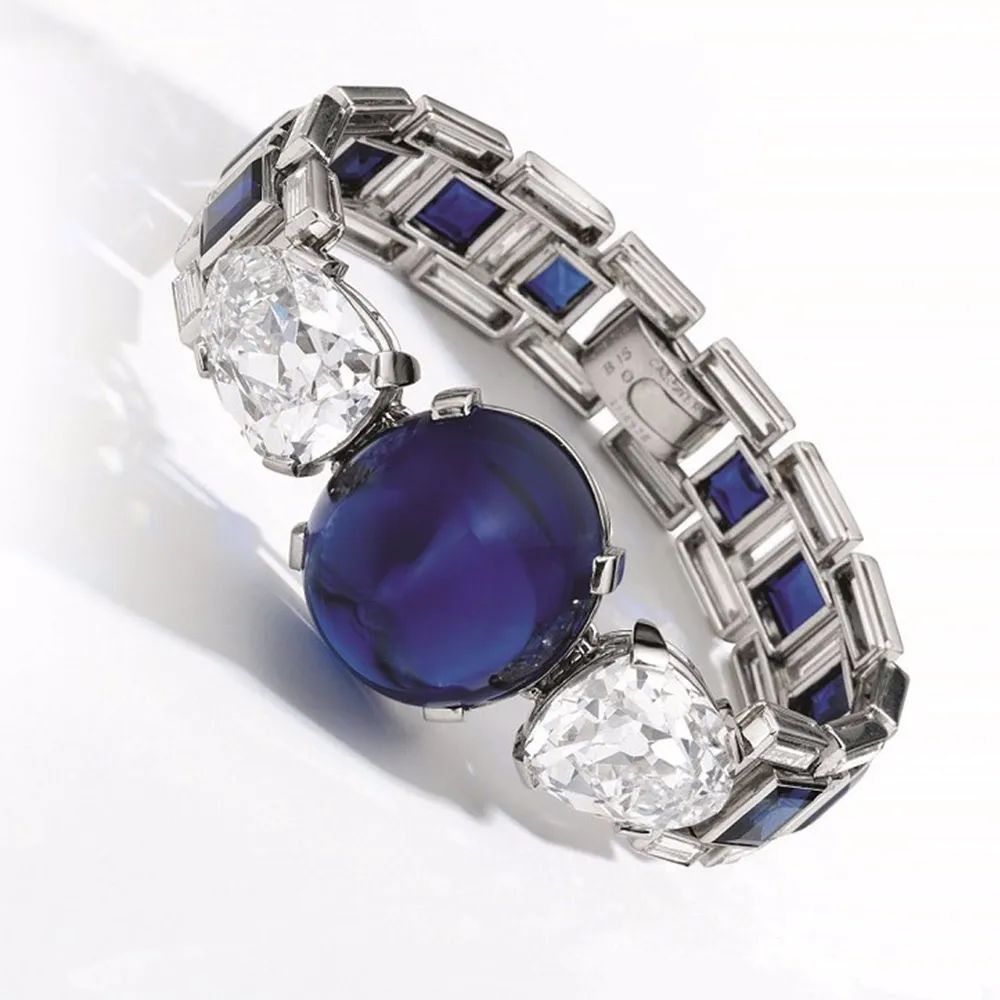
Sapphire is known as “Sapphire” in English, a term derived from the Latin word “Sapphirus,” which means “blue.”

Two members of the corundum family are rubies and sapphires.
Rubies are known as the red corundum, while all other colored corundums are collectively referred to as sapphires.
Therefore, in a broad sense, “sapphires” refer to all gem-quality “corundums” that are not red, with a very rich variety of colors, including blue, yellow, green, purple, pink, orange, and colorless.
So, sapphires are not necessarily blue.
Among them, sapphires other than blue can also be called “colored sapphires.”
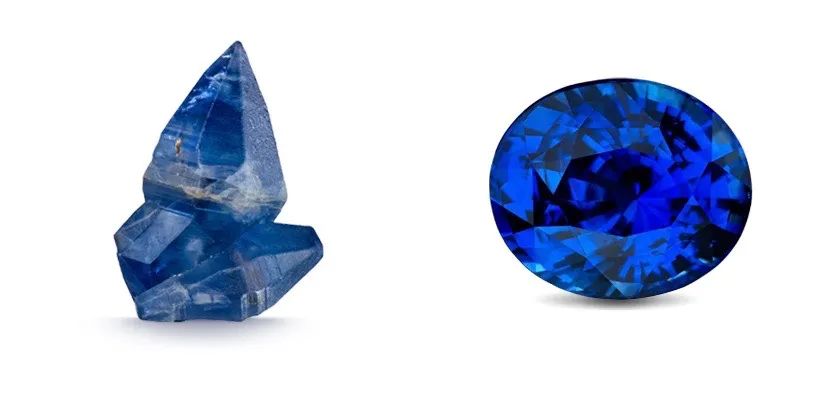
The term “sapphire” in a narrow sense refers to the blue variety of the gemstone.
The main component of sapphires, like rubies, is “aluminum oxide”.
The presence of trace elements in sapphires directly determines the hue of the gemstone, while the amount of these elements determines the saturation of the hue.
For example, blue sapphires contain trace amounts of iron and titanium, while yellow sapphires contain iron and nickel among other elements.
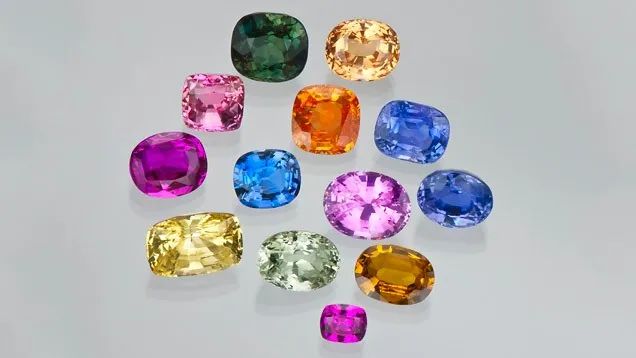
Sapphires are second only to diamonds in hardness, rated as 9 on the Mohs hardness scale, which ranges from 1 to 10. Due to their high hardness and toughness, they are very suitable for embedding in jewelry worn daily.
Sapphires are also very convenient to maintain. They can be cleaned with warm soapy water and a soft brush. However, if the sapphire has been treated with fracture filling, cavity filling, or dyeing, it is recommended to clean it with a wet cloth, which is more secure.
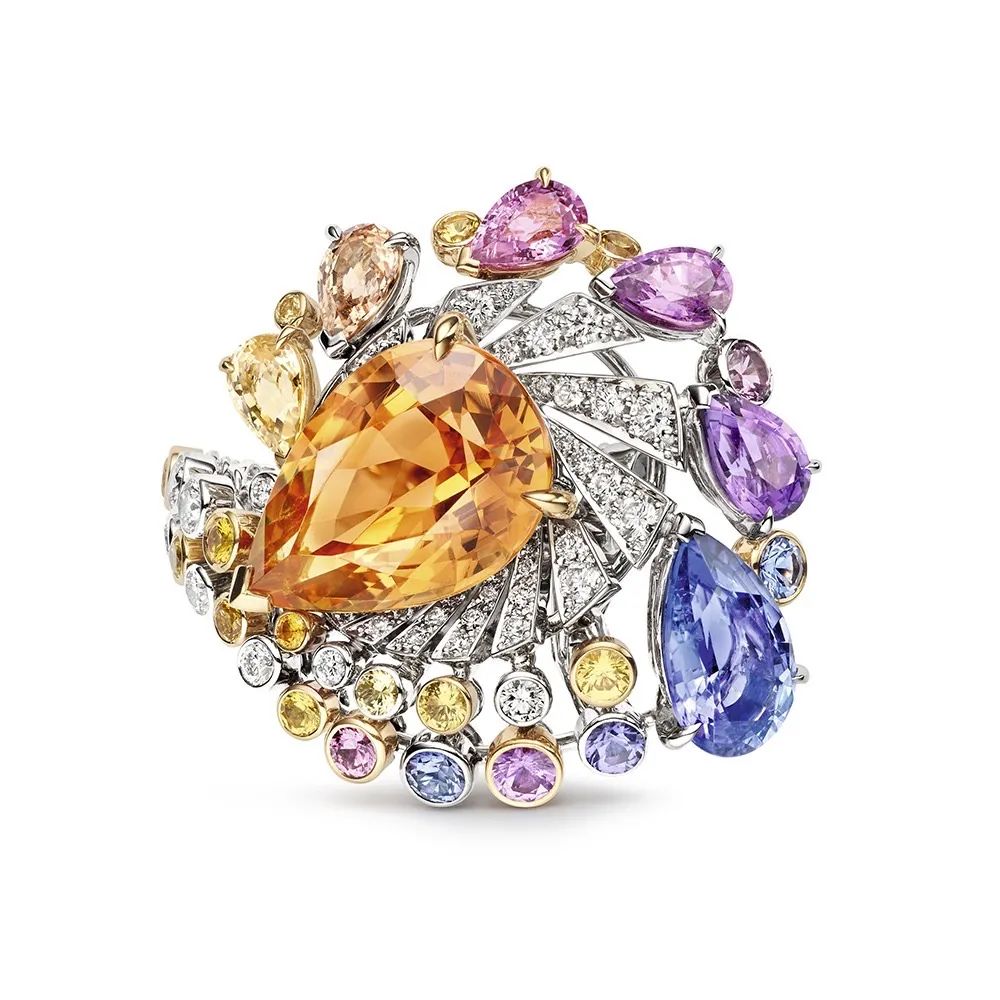
Although there are many colors of sapphires, when it comes to fame and value, the blue sapphire stands out, so today’s content will mainly focus on the blue sapphire.
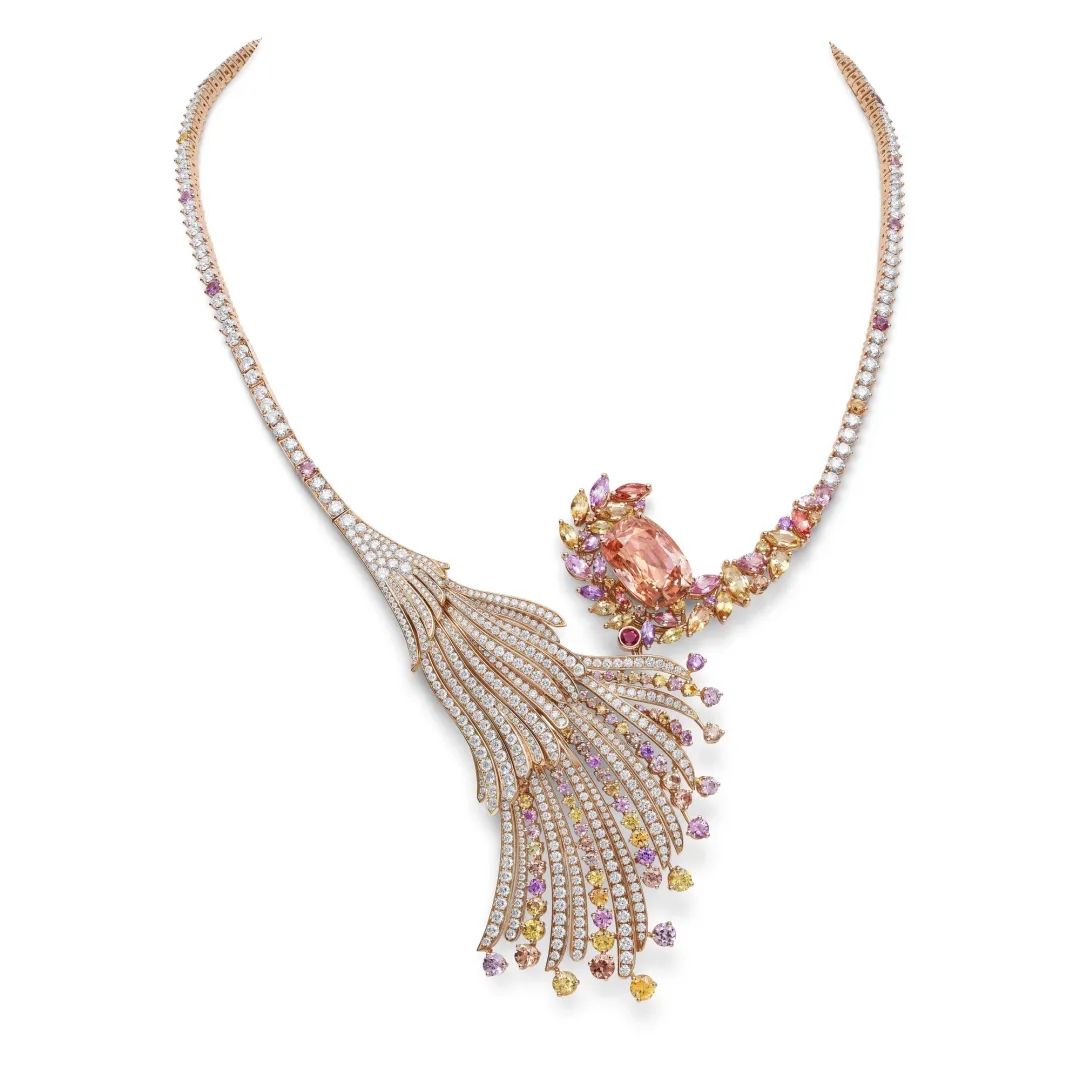
As early as 1000 BC, people regarded sapphires as symbols of nobility, truth, sincerity, and loyalty.
It is believed that the transparent and calm color of sapphires comes from the sky, and as the sacred stone of the sun god Apollo, sapphires are also known as the “Stone of Heaven”.
The noble and pure blue light also makes sapphires the preferred choice for clergy to wear.
For several centuries, sapphires have been a “regular guest” on the robes of royalty and clergy, and they were often used to decorate churches and temples, as well as offerings for religious ceremonies.
It is said that those who possess a sapphire can receive inspiration from the heavenly realm. As long as one gazes upon the deep blue light emitted by the sapphire, they can experience a surge of superhuman wisdom.
Therefore, both medieval prophets and religious figures such as the Pope and archbishops have treasured sapphires as their most beloved and essential items.
In religious paintings, blue is often used to represent the presence of God. People also engrave the Ten Commandments of Christ on sapphires, using them as the gemstones for the mitres of clergymen.
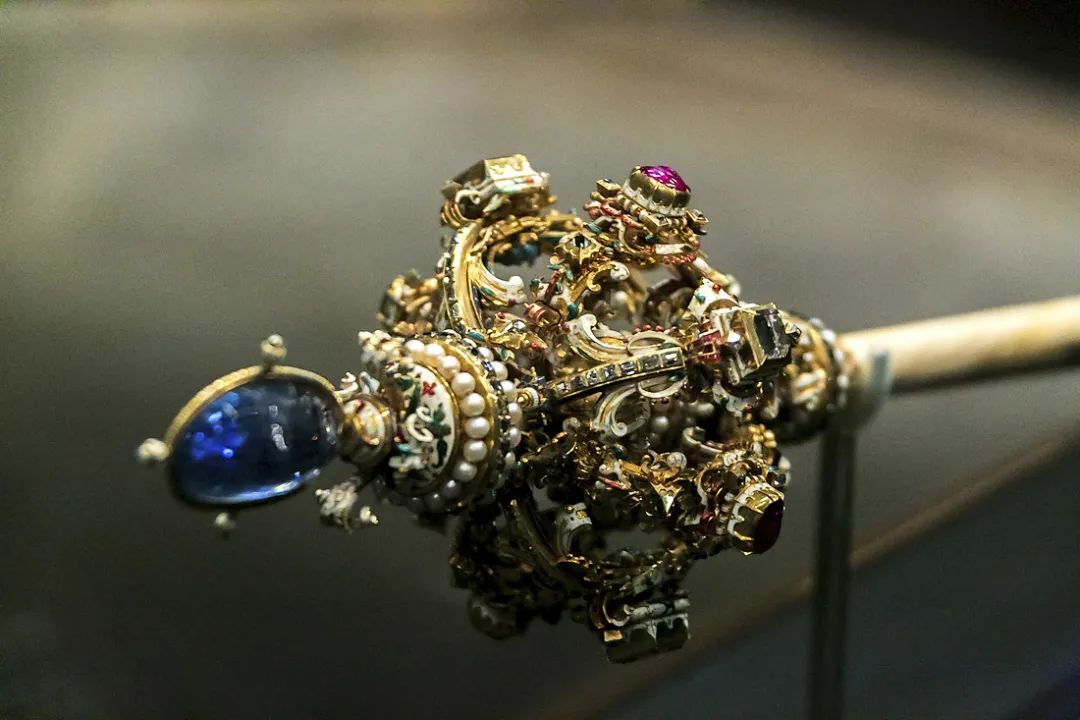
The sapphire brooch on the angel’s chest emits a bright light, highlighting the most revered status of sapphires in the church during the Middle Ages.
In addition to being the birthstone for September, sapphires are also the gemstone for the 5th and 45th wedding anniversaries.
Although not as dazzling as rubies, the deep blue color of sapphires, like the ocean, is also a symbol of faithful and eternal love.
The Sri Lankan sapphire in the picture below, weighing 478 carats, is one of the largest and oldest sapphires in the world.

Its volume is very large, and the color is rich and deep. The crystal is transparent and pure, exuding a captivating beauty.
It was purchased by King Ferdinand of Romania in 1921 from Cartier as a birthday gift for the queen, witnessing the enduring love between the couple.
The Duke of Windsor also gave the Duchess a Cartier panther brooch in 1946 as a token of love.
This brooch can be regarded as a legendary work in the history of Cartier jewelry. The superb inlay craftsmanship perfectly showcases the smooth and soft muscle lines unique to feline animals, perfectly depicting the powerful and alert posture of the panther.

The spherical sapphire on this brooch, weighing 152.35 carats, comes from the famous origin of Kashmir. It has a rich color and emits a velvet-like silk luster.
At the Sotheby’s auction in 1987, Cartier repurchased this brooch for 1.54 million Swiss francs.
The following panther ring is one of the high-end jewelry series launched by Cartier in 2016. Although the overall shape is not as majestic as the brooch given by the Duke of Windsor to his wife, it has a soft and obedient feeling.
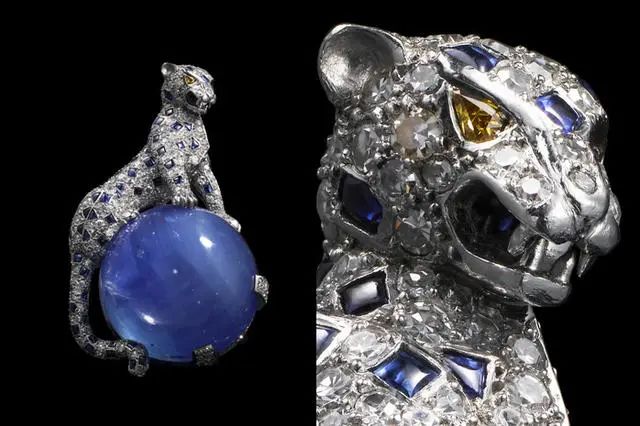
The selection of a sapphire still mainly considers several aspects such as color, origin, clarity, weight, and cut.
Among them, the most crucial points are color and origin.
In addition, the accompanying gemstones and precious metals also affect the value of the sapphire.
The color has the greatest impact on the value of a sapphire. Generally speaking, the more intense and uniform the color of the sapphire, the higher its value.
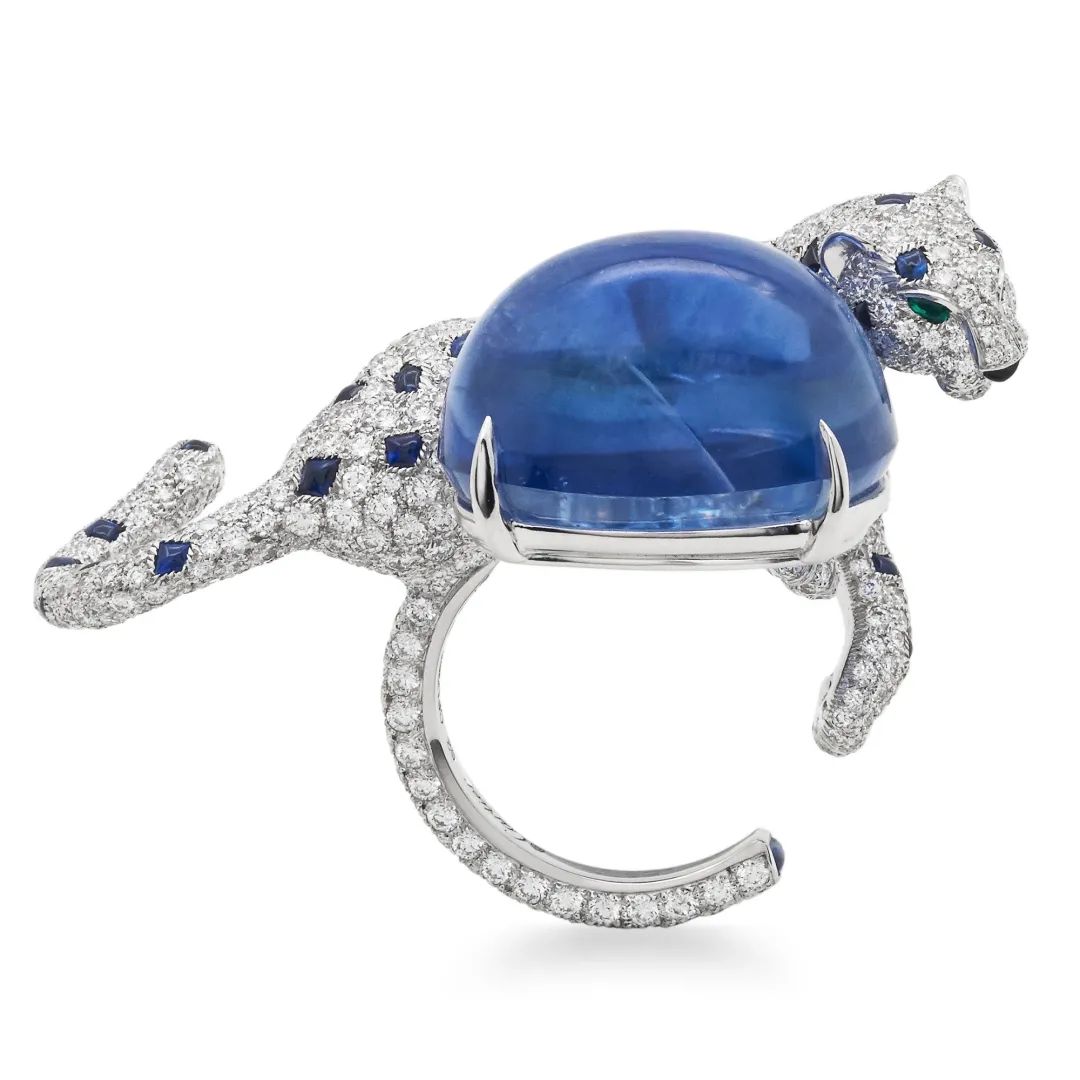
Among them, the most valuable colors are “Royal Blue” and “Cornflower Blue” sapphires.
“Royal Blue,” also known as “Royal Blue,” is a bright blue-purple color with a deep tone, giving people a feeling of being rich, deep, low-key, and restrained.
Places like Myanmar, Sri Lanka, Madagascar, and West Africa are the main sources of Royal Blue sapphires.
This color is known as “Royal Blue” because it is the beloved color of the British royal family. When attending important occasions, the British royal family especially likes to wear “Royal Blue” to show their solemnity.
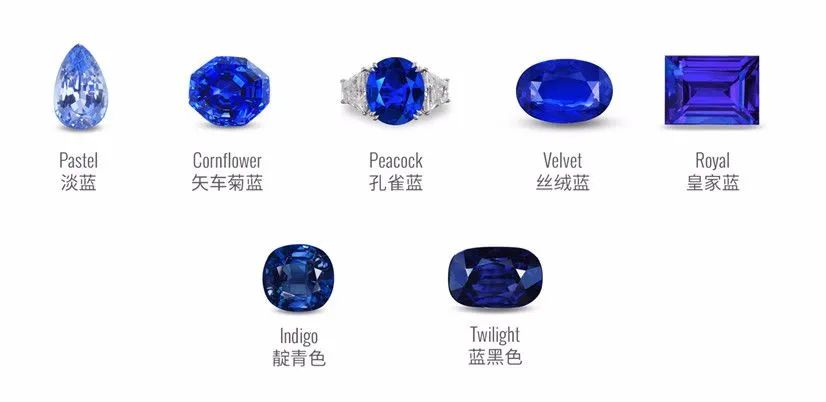
Another type of “cornflower blue” is a deep indigo blue with a slight purple hue, and is also considered one of the finest sapphires. This sapphire is expensive due to its exceptionally beautiful color, superior quality, and rarity.
Its name is derived from the plant “cornflower,” which has a similar color to the gemstone. The cornflower is a type of aster family plant with delicate, elegant, and bright flowers.

According to the truly strict standards, cornflower sapphires are only produced in the Kashmir region of India.
However, current standards have been relaxed, and as long as a certain color grade is reached, even sapphires that are not produced in Kashmir can be named after cornflowers.
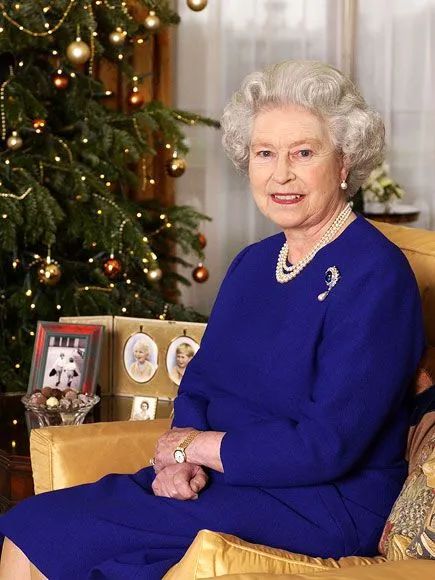
It should be specifically noted that both “cornflower blue” and “royal blue” are actually color ranges rather than precise color values.
Different testing organizations have different standards, and even within the same certification organization, such as the GRS certificate, there is an overlap between the two ranges when naming royal blue and cornflower blue.
Unlike many other gemstones, a very small number of sapphires exhibit a color change phenomenon due to the presence of vanadium (V) element, and we refer to these sapphires as “color change sapphires.”
The most typical color change sapphires can be observed to change color from blue to purple under different lighting conditions.
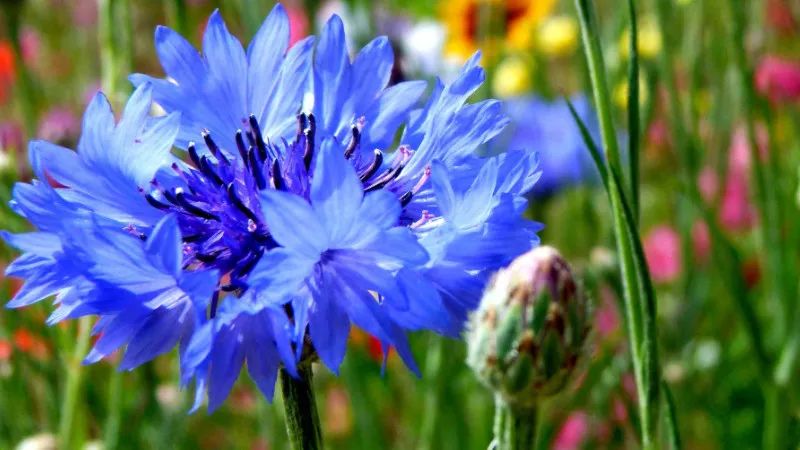
However, due to the extremely harsh conditions required for their formation, color-changing sapphires are extremely rare and more expensive than regular sapphires.
Apart from color, the origin is another crucial factor that affects the value of sapphires.
Kashmir, Burma, and Sri Lanka are historically the three most important sources of sapphires. There are also significant sapphire production in Australia, Thailand, Cambodia, Madagascar, Montana in the United States, and other Asian and African countries.
However, due to the significant quality differences in the gems produced by each mine, an independent appraisal of the origin can increase the value of exceptional quality gems.

Among these sources, sapphires produced in Kashmir hold a dominant position in the global sapphire market.
Due to their extremely scarce production, there is virtually no “market price” for Kashmir sapphires. High-quality Kashmir sapphires are generally only seen at international auctions.
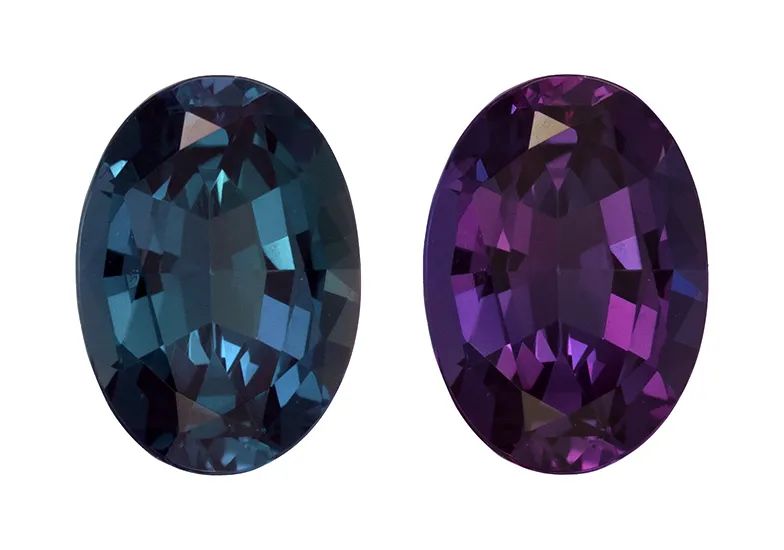
Currently, the high-quality sapphires commonly found on the market mostly come from mines in Myanmar, Sri Lanka, and Madagascar.
Among them, Myanmar sapphires are highly valued in the market, and their prices are often more than double those of sapphires from Sri Lanka and Madagascar of the same quality.
Sapphires from Sri Lanka and Madagascar, on the other hand, have relatively lower premiums, and their prices generally depend on the specific quality.

Sapphires currently on the market are often heat treated to improve their color.
Sapphires that have only undergone simple physical heating are widely used in the international sapphire market and are recognized by the industry and consumers as having a high cost-performance ratio for daily wear.
However, other less common treatment methods are not as widely accepted. For example, sapphires that have undergone lattice diffusion, crack filling, and dyeing will also see a significant reduction in value.
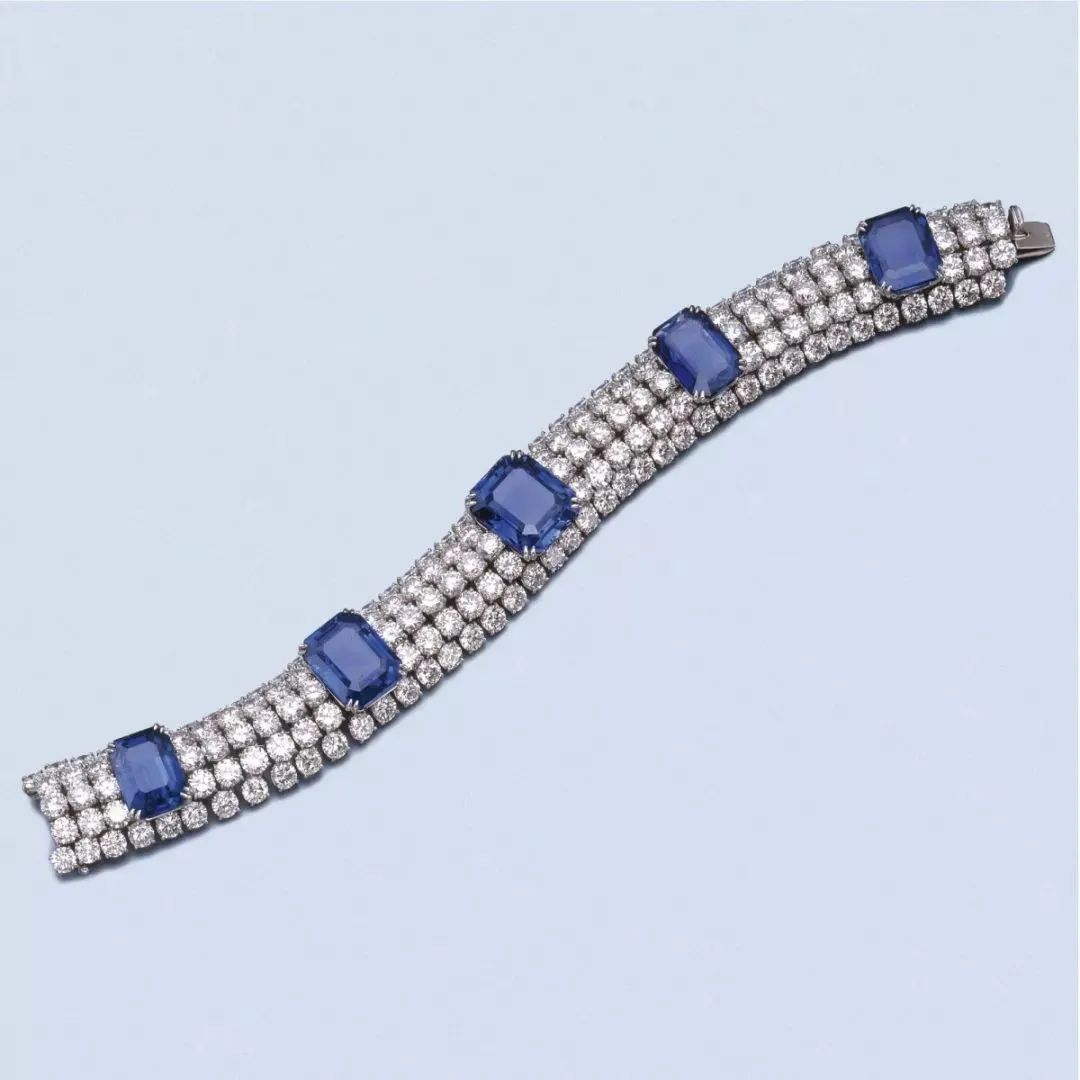
Blue sapphires often contain some inclusions, so sapphires with very high clarity are very rare and extremely valuable.
Generally speaking, some minor inclusions do not affect the value of sapphires, but when inclusions affect the durability of the gem, they can reduce the value of the sapphire.
When the thin, needle-like inclusions shown in the image below are arranged in sapphires, they can also produce a star effect in the sapphire.

For a perfectly conditioned sapphire, if it has an asterism effect, it will also have an advantage in terms of value, which is considered as adding icing on the cake, and is a rare opportunity.
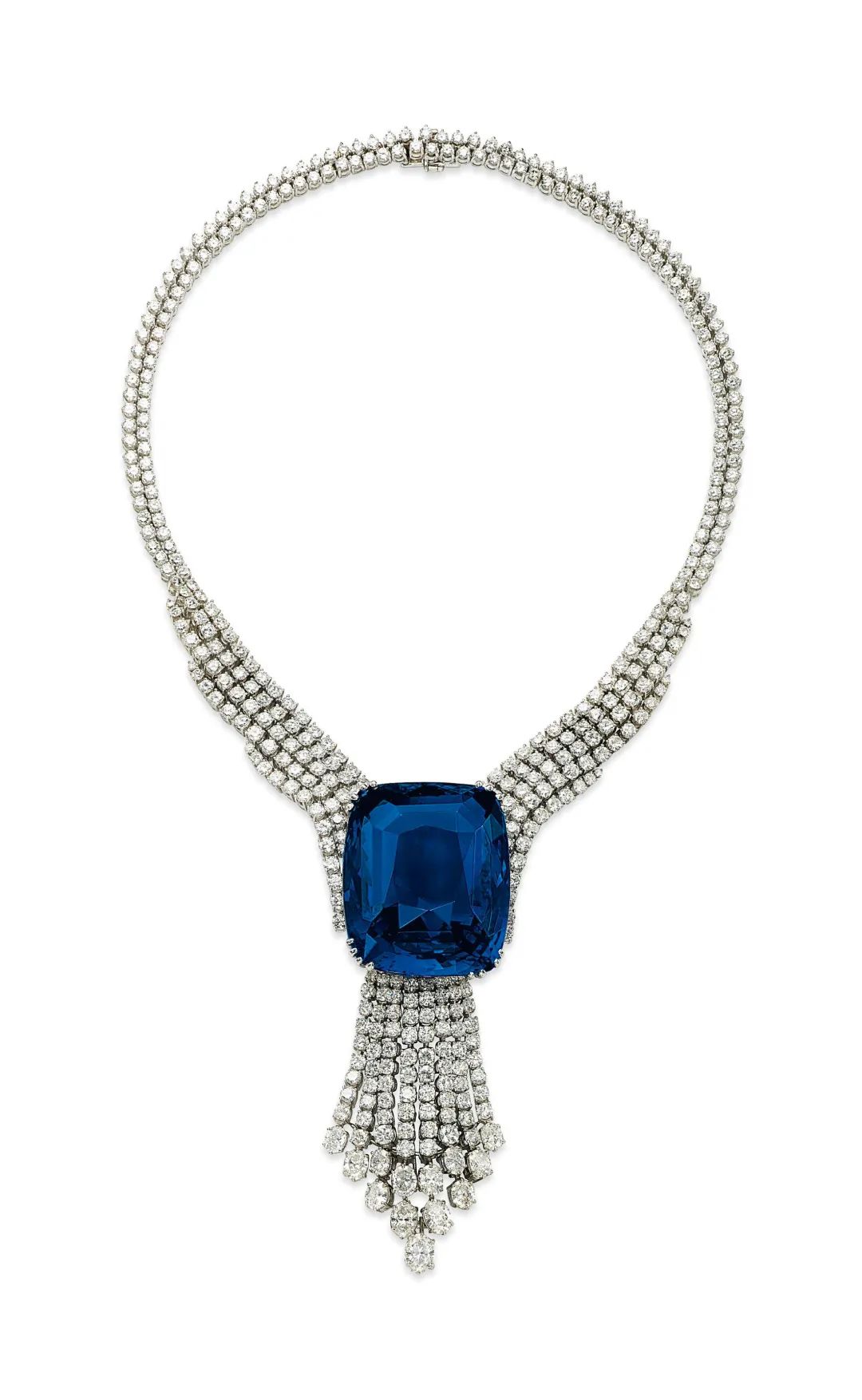
The most common crystal form in sapphire rough stones is a barrel-shaped or spindle-shaped hexagonal cone.

To present the gemstone with the best overall color, maintain the best proportions, and preserve weight as much as possible. During cutting and polishing, the cutter will pay attention to elements such as the color field, multi-directional color, and the brightness or darkness of the crystal to determine the best cutting method.
The size of blue sapphires can range from a few points to hundreds of carats, but most commercially available sapphires weigh less than 5 carats.
Large commercial-grade blue sapphires are rare, and high-quality large sapphires are even rarer.
As the size of the sapphire increases, the price per carat will also rise significantly.

The certificate is like the ID card of a gem, which can help us obtain relatively authoritative and objective information when selecting a gem.
Through the certificate, we can understand the color grade, origin, weight, size, and other important information of a sapphire.
For sapphires, an even more important point is that we can confirm through the certificate whether the purchased sapphire is a natural gem and understand the detectable treatment methods.
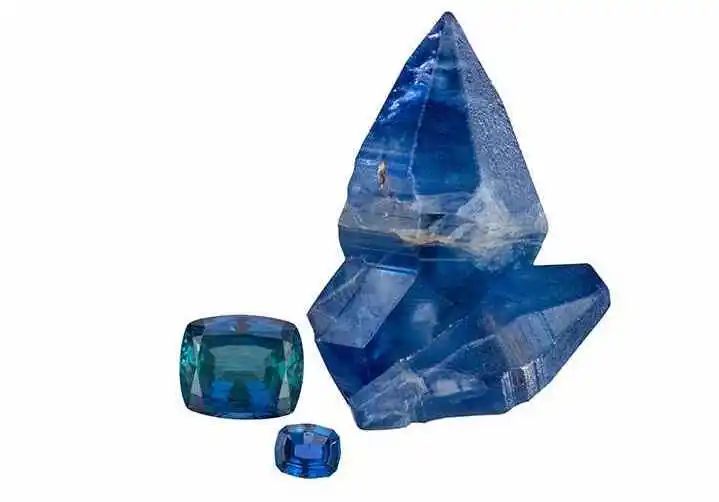
So, whether you are a jewelry enthusiast or a collector, it is recommended to purchase sapphires that have been appraised by a reputable institution, which is relatively more secure.
Nowadays, people’s love for sapphires is not limited to its symbolism of power, nobility, and prosperity. It also represents loyalty, constancy, kindness, and honesty, and is a gemstone of wisdom and tranquility, a transmission of culture, and a repose for emotions.
